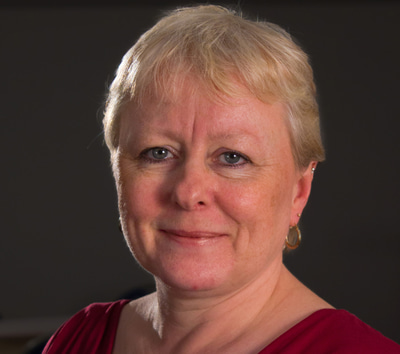- OT
- Professional support
- Health services
- How will optometrists be affected by COVID-19 restrictions ending?
How will optometrists be affected by COVID-19 restrictions ending?
From mask wearing to social distancing, OT details six issues for the profession as measures imposed during the pandemic ease in England

This article has been updated (21 July 2021) to reflect the withdrawal of the NHSEI Optical SOP and sector body guidance around this.
The removal of COVID-19 restrictions on 19 July within England is a milestone moment.
However, the removal of many of the legal restrictions imposed to stem the spread of COVID-19 has been met with apprehension as well as celebration.
While for some the occasion is a welcome return to a semblance of normality, others have expressed concern that the changes will cause confusion and exacerbate rising case numbers.
A poll by the Observer earlier this month (July) found that half of those surveyed were in favour of pushing back ‘freedom day.’
How will this transition affect optometry? OT sets out the implications of the new normal for the profession and asks optometrists for their views on the path forward.
In a nutshell, yes and yes.
The Government has confirmed that health and care settings should continue to follow appropriate infection and control measures after July 19 in England.
The optical bodies have stated that practices should continue to follow the College of Optometrists' Amber phase guidance and the General Optical Council’s supporting statements for the amber phase.
Optical sector bodies have recommended that patients and the public wear face coverings when on practice premises and when receiving eye care.
Practice team members should continue to wear face masks as part of existing infection prevent and control measures.
A set of practical steps that staff can take when a patient cannot or will not wear a face mask have been outlined by optical bodies.
OT asks...
Are fewer patients wearing face masks in your optical practice now than before 19 July?
Face masks: the approach taken by practices in England
Head of professional advancement and governance at the Hakim Group, Claire Slade, confirmed that the existing policy on mask wearing and personal protective equipment (PPE) would remain in place at Hakim Group practices.
“Patients will be asked to wear face masks on all stages of the customer journey, to protect both themselves, other patients and our practice team members. With good procedures in place to explain to patients why we are requesting face masks to be worn, we hope that those who refuse will be a minority who we’ll be able to manage on a case-by-case basis,” she said.
Slade added that the Hakim Group expects that this approach to mask wearing will continue for the foreseeable future.
“This is especially the case for practitioners who will be getting close to patients for clinical procedures as this proximity presents more of a risk of transmission,” she shared.

“I would be happy to continue wearing PPE when seeing patients in my community ophthalmology clinics, to protect them and give reassurance to my patients who I am in close contact with,” he said.
Director of professional services at Leightons Opticians & Hearing Care, Andrew Bridges, shared that practices would keep all existing safety measures in place.

“Obviously for those who are exempt from wearing a face covering we will make careful arrangements to support them throughout their journey with us,” Bridges said.
He highlighted that consultations involve being in close proximity for a prolonged duration in an enclosed setting.
Leightons practices will maintain a closed-door policy with pre-appointment screening questions and staff will continue to complete lateral flow tests at least once per week.
Dan McGhee, director of professional services for Vision Express, highlighted that staff would continue to wear a FRSM iiR mask, as outlined by the optical SOP, as well as additional PPE based on risk assessments.
McGhee shared that the company would encourage patients to wear face masks in practice after 19 July.
“We will continue to promote their use to best protect any individual in our store and will still make these available freely for any customer or colleague who wants to wear them,” he said.
He added that, if a customer declines to wear a face covering, “adaptions will be made to ensure a safe journey through the practice,” adding that it is expected there will be a decreasing number of people wearing face coverings over time.
Tompkins Knight & Son Optometrists in Northampton shared the approach taken by staff to restrictions easing on social media.
“As we work in such close proximity, we respectfully ask all patients to bring a face covering to their appointments for the foreseeable future to protect both yourselves, other patients and our staff.”
Paul Morris, director of professional advancement for Specsavers, confirmed that colleagues will continue to wear PPE, including masks, until further notice – in line with guidance from the public health bodies and professional bodies.
Patients will also be asked to wear a mask, Morris said: “Our patients will be reminded that our stores are classified as healthcare environments and as such, we ask them to also wear a face covering unless exempt from doing so.”
Patients will be made aware of this through the website, email communication, and pre-visit triage phone calls, as well as in-practice posters and team members.
“Wearing face masks adds a level of protection for vulnerable people. I feel like we have been ignored”

Spofforth, who has a compromised immune system, told OT that the easing of restrictions around mask wearing in public and rising case rates means that she does not feel comfortable going back to work.
“We are a high-risk profession because we work so closely to patients. I am not prepared to take that risk,” she said.
Although there is a requirement for patients to wear face masks in healthcare settings, Spofforth worries that there will be confusion among members of the public about the status of optometry practices.
My fear is for my colleagues who are still out there on the frontline dealing with patients who don’t understand why they need to wear masks
A General Optical Council public perceptions survey, published in February this year, found that only one in three members of the public see optical practices as solely a healthcare service.
“My fear is for my colleagues who are still out there on the frontline dealing with patients who don’t understand why they need to wear masks,” Spofforth said.
She shared that there is already tension in practices between patients who will not wear masks and staff, and this could be exacerbated under the changes.
Spofforth said that she did not think vulnerable people have been taken into account when the Government planned the easing of restrictions.
“I think wearing face masks adds a level of protection for vulnerable people. I feel like we have been ignored,” she said.
Yes, social distancing should remain in place for optical settings.
Optical bodies have set out guidance for practices in England, confirming the need to continue to follow the College of Optometrists’ Amber phase guidance.
The NHS England and Improvement (NHSEI) Optical Standard Operating Procedure (SOP) has recently been withdrawn, but the optical sector bodies have supported the need to continue following other existing guidance.
This includes the College’s amber phase guidance, and the GOC’s supporting statements for the amber phase, along with the existing COVID-19 Infection Prevention and Control guidance, which continues to apply in healthcare settings.
This means continuing to follow infection prevention and control guidance, including the use of personal protective equipment, and ensuring social distancing where possible.
Social distancing guidance for practices in England
OT reached out to a number of practices to find out what this will look like in practice, and the policies they will be taking forward beyond 19 July.
During the pandemic, Bayfields developed its ‘Baysafe’ model for providing eye care in adherence with government and industry guidance.
Angela Wiggins, clinical and business development director at Bayfields Opticians and Audiologists, confirmed that from 19 July practices will continue following the Baysafe (version two) protocols, with regards to wearing PPE, maintaining social distancing and clean-down procedures, including sanitising frames and enquiring about COVID-19 symptoms at the appointment booking stage. Compulsory use of glasses, visors, gloves and aprons will no longer be required, however.
“These measures will help to minimise the risk of COVID-19 transmission and give the public confidence that they can access eye care safely,” Wiggins said.
Practices will adopt an open-door policy, but will maintain restricted browsing to manage floor space and adhere to social distancing, Wiggins said, adding: “In addition, we will move away from pre-consultation calls and revert to original 50-minute testing.”
Ball & Gatehouse Opticians operates an appointment-based system for all services, including glasses collections, adjustments and repairs. Sight tests are 40 minutes long, with Optomap included in all private sight tests.
Practice director, Nicola Gatehouse, confirmed existing measures will remain in place for the Wirral practice, sharing: “The virus is very much still around and whilst I agree we have to try and get on with normal life, some precautions are still needed.”
Maintaining this approach has several benefits however, Gatehouse noted: “Not only will this help us do our part in fighting the virus, but I believe it's better for the patients as it will reduce their waiting time with us.”
Looking beyond 19 July as to how long the practice might wish to keep these measures in place, Gatehouse told OT: “We are probably going to keep them long term; there’s no reason not to. Patients, I think, prefer this because they know they're going to get seen on time so there is less chance of waiting around.”
Mohamed Ayyaz Kasmani, director and principal optometrist of Feltham Eyecare Centre, agreed that his Middlesex practice will continue to book patients in by appointments-only and maintain the existing protocols: “After 19 July, with current COVID-19 trends and due to the risks posed to myself and members of my team, we will not be changing this.”
With patients booked in for hourly appointments, there have been challenges to this approach, Kasmani acknowledged, but agreed there have been benefits too: “Our average examination fee has gone up as when triaging, 90% of our NHS patients upgrade to have OCT and retinal imaging. All adult patients have optical coherence tomography (OCT) and retinal imaging as part of their private exam.” Dispensing values have also increased, with the practice providing “a personalised service in a safe, secure, comfortable environment, and with no interruptions from other patients.”
At the outset of the pandemic, the practice also updated its equipment to include an automatic phoropter, which has also allowed for an increased distance from patients during the refraction.
The virus is very much still around and whilst I agree we have to try and get on with normal life, some precautions are still needed
PPE has formed a staple of everyday practice, as with all practices across the country, and this is something the practices were comfortable to continue using, with each of the practices agreeing that they plan to continue asking patients to wear a face mask in the practice.
This is particularly important for Kasmani, as a kidney transplant patient and therefore someone who is immunosuppressed.
“We have to remember that there are many optometrists, dispensing opticians and practice staff members who are vulnerable and they need protecting,” he said. “Despite the lower risk, we are still susceptible to catching COVID-19 despite being double vaccinated. The vaccine is not the full answer, it is an additional weapon in the fight against the spread of COVID-19, and social distancing, wearing a face mask and regular sanitisation are still needed.”
Dan McGhee, director of professional services for Vision Express, confirmed practices will continue to follow standard operating procedures for COVID-19 and IPC guidance from optical bodies, with practice adaptations remaining in place.
This means, “no change” to the way customer flow is managed through the practice, with tensile barriers and floor markers available, rigorous cleaning and hygiene measures and Perspex shields on slit lamps, front desks and between customer dispensing desks. Practices are also encouraged to “utilise technology to minimise customer contact time without compromising care,” McGhee said.
With the profession still operating under Amber phase guidance, Specsavers also confirmed there will be no change to its current consultation guidance, or social distancing measures. Screens and floor signage will remain in place, along with cleaning and sanitising infection control processes.
Practices will also be reminded to maximise natural and appropriate mechanical ventilation, and to leave doors open for as long as possible between patients.
Specsaver’s Paul Morris told OT: “The cleaning and sanitising in between patients that has become standard operating procedure will not change and the use of reasonable adjustment such as perspex screens on slit lamps will also continue.”
Social distancing: what is happening across the UK?
While Prime Minister Boris Johnson outlined plans to ease restrictions in England from 19 July, the devolved nations are each taking a slightly different approach to the final steps out of lockdown.
However, guidance across optometry bodies continues to require the use of infection prevention and control measures.
Wales
The Welsh Government confirmed that the country will move fully into alert level one from 17 July, and will plan to move to level zero from 7 August.
Optometry Wales chief executive, Sali Davis, told OT: “We are pleased to see that Welsh Government will continue to expect anyone accessing eye care services to wear a face covering – this will remain a legal requirement which means that practices will continue to be supported with PPE and the right kind of protection in terms of infection control.
“We are seeing activity levels in Wales rising each day to rates of pre-COVID-19, so this continued protection is welcomed by the profession. Correspondence covering the changes will be circulated in Wales shortly and has already been shared with the UK bodies.”
Scotland
Scotland is preparing to move to level zero on 19 July, with plans for the country to move beyond this level on 9 August. From 19 July, physical distancing will reduce to one metre in all indoor public settings, and outdoors, but the requirement to wear face coverings will remain in place.
A memorandum issued on 6 July advised community optometry practices in Scotland to continue following the IPC and PPE guidance set out in Health Protection Scotland documentation.
David Quigley, chair of Optometry Scotland, told OT: “The most recent guidance issued by the Scottish Government requires us to continue following its COVID-19 guidelines for all primary care providers. This means scrupulously following strict infection control procedures and PPE guidance, with the wearing of gloves and aprons to be considered on a risk-assessed basis.”
Optometry Scotland has welcomed confirmation from the Scottish Government that PPE for the provision of NHS services will continue to be provided at no cost to community practices until 31 March 2022.
“I think it is highly likely that practitioners and patients alike will wish to maintain higher infection control levels for some time,” Quigley continued.
Northern Ireland
Northern Ireland is due to ease some of its COVID-19 measures from 26 July. Subject to health advice and an executive meeting on 22 July, these will include reducing the legal requirement for social distancing to one metre indoors. From 26 July it is anticipated that face coverings won’t be mandatory in classrooms or places of worship, but the requirement for face coverings in other settings is expected to be reviewed.
For community optometrists, there is no change to guidance, such as the use of IPC protocols in healthcare settings, with the Health & Social Care Board welcoming the joint statement from healthcare sector leaders on practice guidance.
From 19 July, the Government’s recommendation of home working will end while remaining limits on mixing indoors will also be removed.
As people return to a new normal, how will this affect footfall to optical practices?
And will the optical solutions that patients seek shift as their lifestyles change with the easing of restrictions? OT canvassed practitioners for their views.
A return to office work is more likely to impact our city centre practices, who are relishing seeing a return to higher footfall on the High Street
Claire Slade, of the Hakim Group, shared that as restrictions eased following the winter peak, practices began to see full clinics again.
“This has been the case with our more rural practices where patients have decided to stay local and support their communities. With even more people deciding to venture from their homes, as is expected after 19 July, we expect these trends to continue,” she said.
“A return to office work is more likely to impact our city centre practices, who are relishing seeing a return to higher footfall on the High Street,” Slade added.
Director of professional services at Leightons Opticians & Hearing Care, Andrew Bridges, observed that lifestyle changes have affected vision correction choices.
“Many contact lens wearers have purchased spectacles and since the lockdown has eased patients are returning to contact lens wear,” he said.
He added that since the pandemic some practices saw patients seek care during the traditional working week rather than at the weekend.
Although home working guidance ends on 19 July, Bridges shared that many patients who worked from home during the pandemic expected these arrangements to continue to the end of the year.
“In line with these lifestyle changes there have been fewer commuters to larger towns or cities with patients keen to stay and shop local, which has been a significant benefit for our practices and for their local community,” he said.
Bridges noted that some practices have seen their busiest day shift from a weekend to a week day as a result of increased home working.
“Often they are seeking care in the traditional working week rather than on a weekend as they may have before,” Bridges observed.
As part of the easing of restrictions in England, the cap on the number of named visitors for care home residents will be removed.

Infection prevention and control measures will remain in place for care homes, the Government confirmed, “to protect the most vulnerable.”
Domiciliary eye care provider, OutsideClinic, which provides services in patients’ homes and in care homes, is not anticipating a significant change to operations, Matt Burford, professional services manager for the provider, told OT.
Considering the restriction changes for care homes from 19 July, Burford said: “For the few residents that we see in a care home, the lifting of the restrictions will mean that access to eye care from a support point of view will be much easier. Many patients prefer to have their next of kin present at appointments which we actively encourage, so being able to have more visitors in a care home setting will allow this to happen.”
Domiciliary care: in the home
With the vaccine rollout and the lifting of restrictions, Burford said it is “reassuring that we will hopefully and eventually see an end to this pandemic,” though emphasised: “Still, due to the vulnerability of our patients, we must always err on the side of caution.
“With PPE, infection control procedures, and the use of our breath shield, we continue keeping our practitioners and patients safe until the time is right to make further changes.”
The Government's plan for the path out of lockdown confirmed that restrictions on in-person teaching and learning in universities, put in place due to COVID-19, will be lifted.
However, many universities have planned to continue the use of certain measures such as wearing face masks and hybrid approaches to teaching – combining face-to-face and online lectures.
Speaking to OT, Dr Rakhee Shah, optometrist and lecturer at City, University of London, explained that the optometry course had been able to restart several clinical elements over the past year, following strict guidelines around PPE and with smaller numbers of students. Exams have remained online, meanwhile, and will continue to be delivered in this way for the summer exams in August.
“Going into September, because the cohorts are quite big, out plan is that live lectures will be delivered online rather than in person,” Shah explained, with advice from the university to keep to a maximum of 40 students in a room at any one time. For tutorials, which are typically delivered in groups of less than 40, the aim will be to facilitate these as discussion-based sessions on campus for lectures delivered online.
“The clinical sessions will be carried out at a pre-COVID-19 level in terms of the breadth of clinical experience they will be getting, but there will be a cap on the number of students present in a room at any one time,” Shah said.
This is what is currently planned for the new year, Shah explained, but added: “Normally by now we would have a concrete timetable, but it is still a case of planning as we’re going along because we just don’t know when things are going to change.”
The course has been waiting for guidance from professional bodies and the university regarding face coverings and social distancing, Shah said, adding: “I think the general preference would be to still be wearing masks, particularly in a closed-room setting, but we are waiting for the guidance.”
For second-year students moving into their third year, the course will be holding a two-week induction ahead of term starting, and before students begin seeing patients, Shah explained: “This will help to bring them up to scratch with things that they might not have been able to get to in their second year because of the lockdowns.”
The course ran a similar one-week induction last year, which received positive feedback from students.
From 16 August, double-vaccinated individuals and those under the age of 18 will no longer be required to self-isolate in England following close contact with someone who has tested positive for COVID-19.
OT approached practices to find out how this change would affect staffing and infection control considerations in practice.
Andrew Bridges, of Leightons Opticians & Hearing Care, highlighted that while it is positive that double-vaccinated staff do not have to isolate following contact with a confirmed COVID-19 case, practices would continue to follow a rigorous testing process, with staff taking a PCR or lateral flow test two to three times per week.
Claire Slade, of the Hakim Group, noted that contact tracing will remain a vital part of controlling the virus’ spread despite the disruption it can cause for practice staffing.
“We hope the change after 16 August will mean our teams can continue their vital work with even more confidence and it is hopefully just another step towards normality for them,” she said.
She highlighted that the easing of self-isolation requirements would not mean that infection prevention and control measures would be neglected within practices.
“On the contrary, these procedures will likely become commonplace to reassure patients that practice teams are doing everything possible to control any other potential infections in the future, not just COVID-19,” she emphasised.



Comments (0)
You must be logged in to join the discussion. Log in